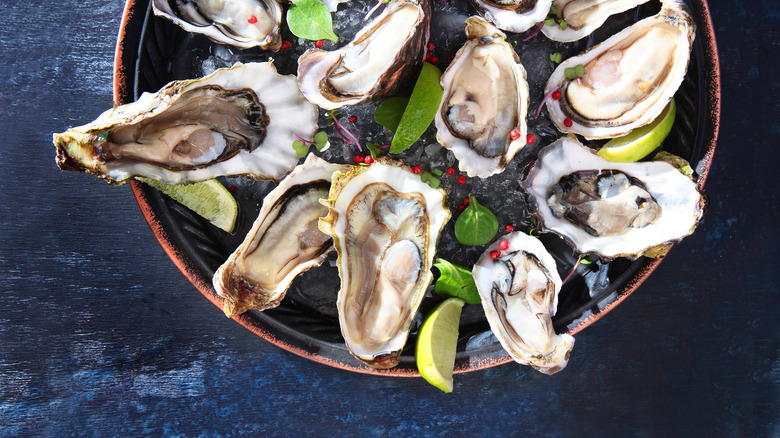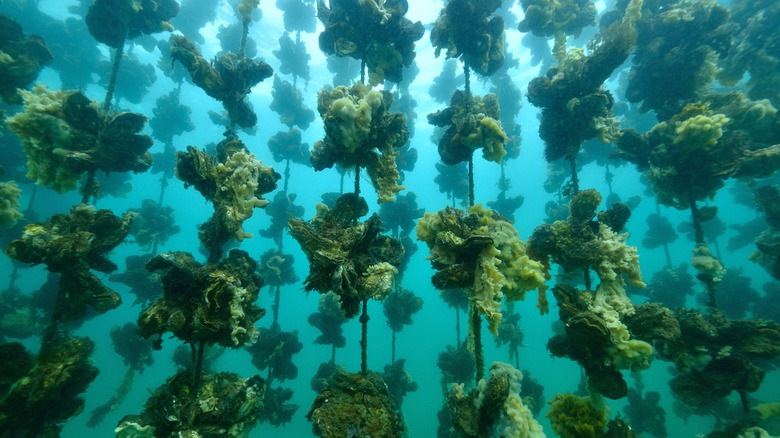The Reason Oysters Are Available Year-Round
When it comes to oysters, you've probably heard of the rule of thumb to only eat them in months containing the letter "r," which include the months of September through April. In other words, don't eat oysters over the summer. That rule of thumb first appeared in an English cookbook, "Dyet's Dry Dinner" in 1599, notes Live Science, though it appears that people have done so for thousands of years, according to research by the Florida Museum.
And there were very good reasons for avoiding oysters over the summer. Before the days of refrigeration, oysters would spoil very quickly in the summer heat if they were not placed on ice immediately. Warmer water temperatures over the summer also led to higher levels of bacteria and red tide toxic to humans. Beyond safety issues, wild oysters spawn over the summer, which makes summer a good time to let them reproduce and increase the population. Spawning also leads to oysters that are not enjoyable to consume, explains the Los Angeles Times: first they become unpleasantly "soft and creamy," then "thin and flabby." Some oysters, notably European flat oysters, will also contain a not so pleasant "surprise crunch: a sac of baby oysters in tiny shells," warns The New York Times.
Times have changed and oysters can be enjoyed throughout the year
These days, oysters can be found on many menus year-round. There are several reasons for this. The invention of refrigeration, along with improved safety laws, is one reason. Strict icing laws over the summer means oysters are immediately placed on ice after harvesting, and kept at safe temperatures during transport to the shop or restaurant. There's also improved monitoring of the farming process and water quality, according to The Kitchn.
With oyster farming, farmers can also control the breeding cycle of oysters, so that they don't have to spawn over the summer, as White Stone Oysters have done. Many oyster farms are also found in colder water, where oysters either don't spawn at all or have a very short spawning cycle, notes The Kitchn. There are also oysters, known as triploids, that have been bred to be functionally sterile, which means they don't spawn at all. So, forget about only enjoying oysters in months that have an "r" in them and slurp down those briny bivalves whenever you want, even if it's in the height of summer. As always, be sure to get them from a trusted and reputable source and keep those oysters fresh until you're ready to consume them.

